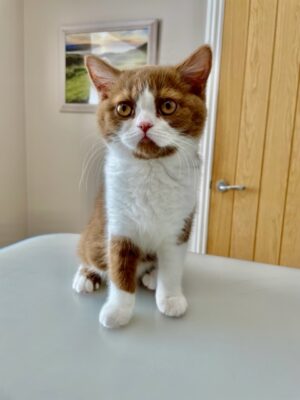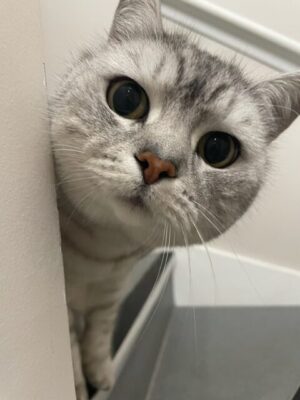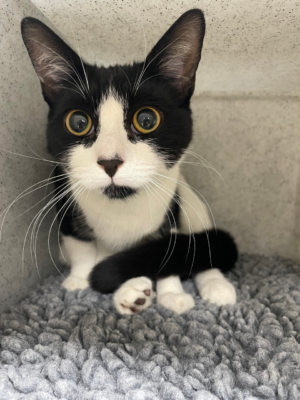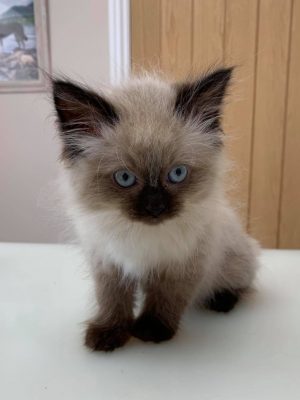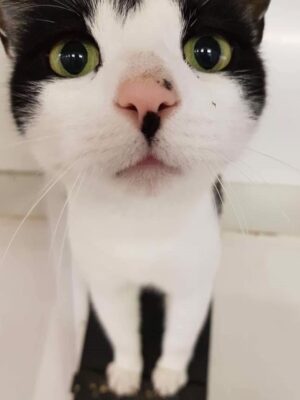Diabetes in Cats
Diabetes mellitus in cats is when the body does not produce enough insulin or doesn’t respond properly to insulin. Insulin is a hormone that stabilises your blood glucose levels. Low insulin leads to high glucose levels in the blood known as hyperglycaemia. The glucose is therefore not encouraged to go into your cells where it is essential for fuelling metabolism and effectively the cells become starved of energy.
What are the symptoms?
- Drinking a lot
- Urinating a lot
- More hungry than usual
- Less active or sleeps more
- Frequent infections
- Cataracts
- Ketoacidosis usually resulting in symptoms such as vomiting, inappetence and lethargy
- Obese cats, or those with an indoor or inactive lifestyle or those with underlying pancreatitis or hyperthyroidism may be more prone to developing diabetes.
Diagnosis
Your vet can diagnose diabetes through blood tests for glucose and fructosamine and with urine tests looking for glucose and ketones.
Treatment
Treatment is insulin therapy. This involves lifetime therapy with an injection of insulin under the skin usually twice a day. This needs to be given at the same time everyday before, or just after, a meal. There are two ways to do this – with syringes or a VetPen.
Once treatment is initiated the symptoms you notice should reduce, but regular monitoring of blood and urine samples are required until your pet is stabilised. Your pet will start on a baseline dose of insulin but every pet and their diabetes is different and it may take several tweaks to your pets insulin dose before finding the correct dose to control it properly.
There are several types of insulin and some cats may respond to one compared to the other.
VetPen – This is a pen into which an insulin cartridge is inserted. A small needle is attached allowing really efficient, accurate, and easy administration of the insulin dose. There is more information here
Nutrition
It is important to keep meal content, volume and timing identical each day to avoid changes in insulin requirements.
Feed your cat 10-12 hours apart twice a day and ensure your pet has eaten prior to giving its insulin dose.
Choose foods with quality source of protein and low carbohydrates. There are specific diets that can help control diabetes such as Royal Canin Diabetic, Hills m/d and Purina DM.
Switch to a low-calorie diet if your cat is overweight. Overweight cats can have more insulin resistance so higher doses of insulin may be required.
Exercise
Keep exercise and play consistent. A sudden change in exercise can upset the control and balance of diabetes but keeping active is really great!
Female cats
It is recommended to spay your cat. This is for two reasons:
- Progesterone in an intact female can interfere with the normal action of insulin, this makes it more difficult to control diabetes in entire female cats.
- Additionally, diabetic cats are more prone to infections and that includes within the uterus. This is called ‘pyometra’ and can make your cat very sick.
Monitoring
Monitoring of clinical symptoms such as thirst, urinating, appetite, weight loss or gain is really helpful.
The best way to more accurately monitor diabetes is with blood and urine tests. Consistent monitoring and patience are key to finding the optimal control.
Monitoring can be done in two ways:
Blood tests for glucose values during the day known as a ‘glucose curve’. This is the most accurate way of testing and can be done at the vets or at home. Glucose curves require a glucose reading every few hours throughout the day. A glucometer is used which is a glucose measuring device and just requires a pin prick of blood from an ear or paw. We can teach you to do this at home. Taking glucose values through the day helps us understand how the body responds to the dose of insulin and whether the dose needs to be adjusted. You can send us the readings you take and we can interpret these for you and advise you if you need to alter the insulin dose.
Your vet can also do a fructosamine blood test which can identify how well controlled the diabetes has been over the last few weeks and this may be a good test to monitor things once the diabetes is more under control.
Urine tests can check your cat for the presence of glucose and ketones which can identify if a cats diabetes is not controlled. Neither glucose or ketones should be present if the diabetes is well controlled. Cats with diabetes are also prone to urinary infections so this needs intermittently checking.
EMERGENCIES
Hypoglycaemia – This is when glucose levels go too low. If this is untreated it can be fatal. It is important to be aware of the symptoms so that you can rapidly prevent problems.
How can this happen?
- Too much insulin given
- Missing a meal
- Change in diet or amount fed
- Increase in activity
- Infection or other illness in the body
- Decreased appetite or vomiting
Symptoms for a ‘hypo’ (hypoglycaemia) include weakness, collapse, twitching of muscles, seizures, behavioural changes such as suddenly looking for food.
What do I do if this happens?
Contact your vet immediately especially if your cat is unconscious.
Rub a small amount of honey or jam on your cats gums, the sugar from this is absorbed very quickly and your cat should respond.
If your cat is able to eat, then feed a small amount of food.
Ketoacidosis – This happens when diabetes is left uncontrolled for too long. Ketones build up in the body and this can be life threatening. Contact your vet immediately. Your pet will most likely need to be hospitalised and given treatment.
What to expect?
Most cats respond really well to therapy and can live a happy, fulfilled life for many years if their diabetes is well controlled.
In some cats, their diabetes can actually go into remission and sometimes treatment can be stopped or reduced. It may need to be restarted if necessary. This is rare but if this is happening in your cat you may find their glucose curve is changing and their peaks of glucose are much lower, and you may notice your cat has more ‘hypo’ episodes to the usual dose of insulin.
More information:
http://www.caninsulin.co.uk/cats/diabetes-about.aspx
https://prozinc.us/cat-owners/about-feline-diabetes





